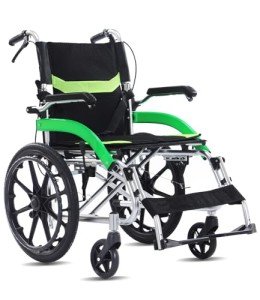Five Killer Quora Answers To How To Self Propel A Wheelchair
페이지 정보

본문
 How to Self Propeller a Wheelchair
How to Self Propeller a WheelchairLearning to self propel wheelchairs opens up a whole new world of independence. It takes a lot of the right body posture and practice to achieve this.
A precise grip and method of pushing is essential for the correct body positioning. This article will focus on these skills and other aspects that are crucial to wheelchair propulsion.
Hand Positioning
Properly pushing a wheelchair with the hands is an important element of self propelling. It's best to start with accuracy and move towards speed. It's also an excellent idea to sit down while pushing to improve stability and comfort, especially for users with upper body restrictions. Hands should be positioned in a way that they are aligned with the speed of the wheel. Push using both hands, but without wrapping thumbs around hand-rims. This is a common mistake which decreases efficiency and can increase the force required per stroke.
The recovery path of the hands should be done in a relaxed pendular fashion below the hand-rims after each propelling cycle, in order to avoid contact with the rear wheels (a "semi-circular" recovery pattern). This reduces the strain on the shoulders, as well as keeping the number of strokes and length of each stroke at a minimum.
It is often recommended to utilize long strokes and full recovery on more difficult surfaces (like the hand position on the timepiece). This can help reduce shoulder injury due to repetitive motion but may increase loading at the shoulders during each cycle.
It is also possible to reduce shoulder injuries by keeping the same posture when braking and propelling. If the wheelchair user can maintain a consistent rhythm for both actions, they will be better able to manage the forces and adjust to changes in the terrain.
On soft or muddy surfaces it is usually necessary to lean slightly forward while driving to keep the front wheels from sinking into ground and tipping backwards. You should experiment with different trunk leans to find the ideal balance between too much and not enough lean. As with any new skill, consistent training will help you gain competence and confidence. Wheelchair propulsion is an essential skill for those who suffer from mobility issues and can open up a whole world of independence. Anyone can learn how to self propel a wheelchair (similar web page) to operate in a manual wheelchair easily if they have the right equipment, technique and knowledge. This entry was posted in News and tagged how to, wheelchair.
Foot Positioning
The foot position of the client is very important to ensure stability. It is not always ideal if the wheelchair has feet that are not close enough since this makes it difficult to self-propel. Sometimes, it is necessary for the wheelchair to have this type of configuration to maneuver over difficult terrain. If a person is going up an extremely steep ramp or perhaps even over some of the beautiful National Parks and beaches in the United States, the wheelchair needs wheels that can push over them to allow the user to move forward. The front wheels must be positioned as shown below.
The client can push the wheels together by grasping the rims. This what is the lightest self propelled wheelchair a slow and complicated process that requires a lot upper body strength.
Wheelies are also essential to help the user get over obstacles like curbs or people. In this situation, the client will place their left foot on top of their right, to allow them to raise themselves up and over the obstacle. The client will then lift their right leg and push with their left hand to go over the obstruction. This is referred to as a crab walk, and it is an effective method to maneuver a wheelchair through some of our most challenging terrain.
They are a great choice for injured or disabled people who wish to move about without needing help. They are lightweight, compact and foldable so they take up less space in the home than other mobility aids. They can be converted into powerchairs using accessories such as the E-Motion, giving users the option of using their chair while enjoying the benefit of electric assistance when required.
Braking
The ability to self propel a wheelchair is a crucial skill for individuals who have mobility issues. They can navigate many types of terrains and conditions on their own. It also helps to build strength in their upper arms and shoulders.
The user should push down on one side of the hand rim, then pull the opposite side to push the wheelchair forward. This pull-pull action creates momentum and moves the wheelchair in a desired direction. You can alter the speed of the wheelchair by applying more or less pressure to the wheels or by using the hand brakes, if they are equipped.
Ideally, the push cycle should last for three hours or more. This will decrease the amount of duration that the shoulder is loaded and decrease the risk of injury due to repetitive strain. The width and size of the back wheels will determine the speed at which a wheelchair gets propelled. Larger wheels require more force to move, while smaller wheels are easier to maneuver. Wheelchairs may also be designed to have camber which aligns the rear wheels with biomechanics and enhances the stability of the lateral side.
Wheelchair users who want to improve their propulsion technique should concentrate on achieving the correct body position, and practice in a safe space such as a empty hall or parking lot. The aim should be to develop long slow strokes, allowing the wheelchair to glide between strokes.
It's also crucial for the user to practice maneuvering while moving, such as weaving around objects or navigating turns. A good way to do this is by weaving across cones and gradually moving into straight-line motion. The more one practices, the easier it will be for them to achieve this.
Self-propelled wheelchairs can be an ideal option to help people keep active and doing things they enjoy. They provide independence and can be a great method to meet with friends, go to the movies, or even travel. You can regain or maintain your independence by learning to use a chair properly.
Stability
used self propelled wheelchair-propelling wheelchairs allow wheelchairs to be self propelled wheelchair near me-sufficient and to go wherever they wish without relying on others. It does require the use of a lot of upper body strength however it is possible to push the wheel on flat surfaces, or even up small hills. This is why a lot of wheelchair users choose an attendant controlled (also called an attendant propelled) chair such as the Action3 NG or ErgoLite 2 and are driven by an attendant.
The act of grasping the hand rims in order to move a manual wheelchair is one of the most important things to learn to do correctly to ensure optimal performance and comfort. We find that many clients use this type of wheelchair with the hand rims placed too far away from the front. This means they must push further backwards to move their arms. This is not efficient biomechanically and can lead to shoulder strain over time.
The best hand-propulsion pattern is a semicircular design in which the user alternates between the push phase of the wheelchair and the recovery phase. The push phase involves the client pressing down on the casters of the wheelchair which requires the use of a large number of small strokes. This push pattern also helps to exercise the shoulder retractor muscles and maintain an active range of motion.
As the recovery phase begins, the client moves their hands back towards the wheel's rims until they make contact with the casters. This allows for longer strokes and also reduces friction during the recovery phase. Some wheelchair users move their hands over the rims of the wheels in a smooth circular motion, but this method isn't as efficient. It could also cause extra wear on the wheels.
Another important aspect of stability is the positioning of the rear wheel for self-propulsion. If the wheel is set too far in the rear, the wheelchair could slide. This could make it difficult to navigate around obstacles and it's not a good idea to risk shoulder injuries. We must assess the strength of the client, their range of motion, muscle tone and their orthopedic condition during the seat assessment to determine the appropriate wheel position for them.
- 이전글You'll Never Be Able To Figure Out This Mens Masterbation Toys's Tricks 25.01.06
- 다음글Guide To Robot Vacuums Best: The Intermediate Guide For Robot Vacuums Best 25.01.06
댓글목록
등록된 댓글이 없습니다.

